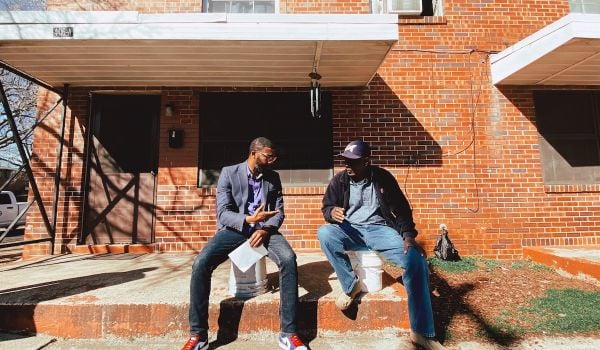As we prepare for the 21st Congress for the New Urbanism conference later this spring, Next City will run interviews with a number of the event’s speakers. Read the first installment here.
Quite a bit of rejoicing met the announcement in 2009 that Shelley Poticha was heading to the U.S. Department of Housing and Urban Development. Formerly the president and CEO of Reconnecting America and executive director of the Congress for the New Urbanism, Poticha had a reputation as one of the most vigilant and knowledgable proponents of sustainable growth in the field. As HUD’s senior advisor for sustainable housing and communities, she has taken that knowledge national.
Here, Poticha talks about how the feds work with communities to support sustainable living, strategies for making sure transit-orientated development is accessible to all, and how skipping out on long-term projects to save money can serve to benefit neighborhoods.
Next City: To start, I’d like to get your impression of what the 2013 federal budget, sequester and all, will mean for cities around the country. Specifically, what’s the outlook for housing and transit?

Poticha
Shelly Poticha: In a general sense, the sequester has pretty significant impacts in terms of the capacity of HUD and the Department of Transportation to have the bandwidth to partner with communities and help them identify resources or adopt policy reforms. In part because we’re being furloughed, there’s a hiring freeze — it’s a very lean time at the federal government. In terms of funding allocations, there are also cuts there. I don’t know any of the specifics at the Department of Transportation, so I can’t really speak to that. But there are going to be real impacts on low-income people, particularly those who take advantage of our housing voucher programs and homeless assistance programs.
NC: You’ve been quoted as saying, “Something’s happening in America, and transit is not just for people with no other options.” Local governments have been making unprecedented investments in public transit, even in places where one wouldn’t have imagined such a thing happening 10, 15 years ago. To what extent is the federal government responsible for encouraging public transit? What is its role?
Poticha: The sea change that I was referencing in that quote really is coming from local communities. The fact that you’re speaking in this interview series with Salt Lake City and places that didn’t grow up around transit, and yet they’re able to get local ballot measures passed to be able to fund this work… to me, the work of shaping cities around transit is starting with local communities.
One of the things I’m really proud of in this administration is that the work that particularly mayors and regional transportation agencies have done is that they have successfully encouraged the Federal Transit Administration, for the first time, to issue new rules for how they’ll evaluate new transit projects. And for the first time, those projects will take into consideration who lives near transit now, and who is likely to live near transit in the future, and what are the economic development benefits coming from new transit investments. That, I think, is going to change the landscape very significantly in terms of what transit projects actually get funded.
NC: Let’s say 20, 30 years down the line, what do you think the transit landscape in the United States will look like?
Poticha: If we were without constrained resources, I think we would see many, many more small-, medium- and large-sized regions with interconnected transit systems such that we would have more places where you could truly have that option of not having a car, or having one less car. But I also think we are in a time of deep, deep financial limitations. So the places that are going to be able to realize that vision are the places that really look creatively at setting priorities, focusing their resources — all kinds of different resources — into making that vision possible. And that often requires taking away projects that might have been on the books for years, but just aren’t relevant anymore.
That’s something I’m actually hopeful about. A number of our grantees through our Regional Planning Grant program have started running the numbers and realizing that they are going to save a lot of money in infrastructure costs, and maintenance costs, and other kinds of costs, it they focus growth around their transit system. Hopefully that really takes off as a standard practice.
NC: Last month, the American Society of Civil Engineers gave American infrastructure an overall grade of D+. What options are on the table for improvement?
Poticha: I’ve been a big advocate for quite a few years of thinking about transit service as a part of the quality of life and the economic resilience of our communities. If you take that lens, you open up a whole array of funding sources to ensure that we can have high-quality transit and local streets that are well maintained. We have to begin to get out of the silos where we have thought about funding transit and streets just through a very limited number of tools. We’ve got to look at a more comprehensive set of tools, and also a more comprehensive set of partners. There’s a growing interest in public-private partnerships as a vehicle for bringing new resources in to make transit better.
NC: What headway has been made in fostering these types of partnerships at the federal level?
Poticha: One of the tools that the last federal transportation bill, MAP-21, put forward was that they plused-up a program called TIFIA. It’s a low interest loan program for transportation projects. Hopefully there will be enough projects that utilize that tool so we can really begin to make the case that we can go bigger and focus on using public-private partnerships to deliver high-quality places and great mobility. The challenge is, and I’ll just be very blunt, that the transit community has been reluctant to use some of the value lift that comes from the real estate that happens around transit as a revenue source for these projects, and that’s tilted the playing field toward transportation projects, like toll roads, that have an inherent revenue source.

Image from the South Lincoln Redevelopment mater plan. Credit: Denver Housing Authority
NC: Cities generally thought of as leading the way on green building, transit and walkable streets — the San Franciscos and New Yorks — have also had struggled in providing an adequate supply of affordable housing for their low-income residents. What approach can we take to ensure that our most livable urban communities are also open to people of all incomes?
Poticha: Equitable transit-oriented development needs to be a very high priority. We’ve demonstrated that we know how to build high-end housing around transit, but that is only one segment of the market. And people do benefit substantially, if they are working families, [from] not having to drive as much, maybe owning one car instead of two — it’s so much more affordable. Through our Sustainable Communities Initiative we’ve funded a whole array of tools and zoning code revisions that I’m hoping begin to set us on a course of delivering mixed-income communities around transit.
A number of our grantees are revising their zoning codes for the first time in 50 years. They’re looking carefully at how they can calibrate, for example, inclusionary housing provisions so that a portion of the market-rate housing is reserved for low- and moderate-income households. We’ve been doing a whole series of training on how to build smaller housing units so that they don’t have the quite same barrier to entry as a big McMansion. And a number of our grantees are also establishing acquisition funds — pooled investment funds — so they can go out in advance of when a new transit line goes in and purchase property while the prices are low, so that then they can deliver affordable housing in those neighborhoods once they start maturing.
NC: Are there any specific equitable TOD projects out there right now that you would hold up as a model?
Poticha: One of the places that I’m really excited about is Denver. There’s a neighborhood, South Lincoln, where they have really taken equitable transit-oriented development to heart. For the first time in a real way, the city, the housing authority and the transit agency are working together. They’ve done land swaps, they’ve built mixed-income housing, they’ve built senior and disabled housing, and they’ve woven all that together into a neighborhood of walkable streets and community gardens. This is all within basically three or four blocks of a transit station that is two stops out of downtown. [It is a] very highly desirable location, but really is, I think, on a path to being a very diverse neighborhood going forward.








_600_350_80_s_c1.jpg)







